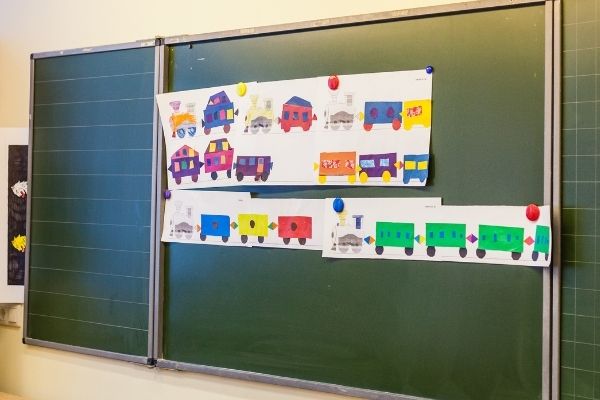A teaching assistant (TA) is an individual who offers help and assistance to a teacher in a classroom. TA’s role varies from one school to the other or even one classroom to the next.
Teacher assistants play a key role in the education system. Some of their tasks include helping the teacher with routine housekeeping duties like collecting assignments and recording grades.
Other duties that a TA undertakes include;
- Managing student behavior by enforcing class and school rules
- Helping to evaluate students' work by re-enforcing what the teacher has taught—a duty they fulfill by working with students individually or in small groups
- Help the teacher prepare and organize learning materials and set up equipment and information in readiness for a lesson.
At the time of this writing, with many students returning to a physical school, you will need a teaching assistant to help those students who might have fallen behind, possibly after struggling with remote learning.
Do you need an elementary teacher assistant?
Let's explore the duties and responsibilities that elementary teaching assistants perform to support you, resulting in your students thriving academically.
What Duties Elementary Teaching Assistant Perform?
There is a wide range of duties and responsibilities of teaching assistants. The main task is to support the classroom teacher. This support is given by working with groups of children, individual students, and at times covering the entire class. The support provided can include providing extra support to a student with disabilities.
1. Help With Preparation
One of the ways that elementary teacher assistants help in class is by preparing lesson and learning material as directed by teacher and setting up equipment for a lesson. For example, they can create displays inside the classroom, help with extracurricular activities and revision sessions. By assisting in the class preparation, TAs take excessive pressure off and ease your stress so that you can focus on teaching your students effectively.

2. Offer Needed Support
Teaching assistants may play a crucial part in helping students with special educational needs. The most effective way for TAs to help students is by working with them one-on-one or in small groups. Here, it’s beneficial to mix it up and provide opportunity to your assistant to play a part in a meaningful way.
In addition to helping students who have special educational needs, an elementary teacher assistant also supports those who need extra help with skills such as reading and mathematics. They can listen to students read and help with word sounds and meanings.
Teacher assistant can also provide support outside of the classroom, such as on the playground, in the lunchroom, monitoring exams, or on school trips.
3. Managing Students
Teaching assistants can help instructors manage student behaviors by keeping an eye on students and enforcing classroom rules. They also support in promoting positive behavior in the classroom. They also provide feedback on certain behavior of your students that you have missed that might be disruptive, alongside feedback on students' progress.
It would be best to keep adequate and regular communication between you and your elementary teacher assistant by having frequent meetings to go over student development and make plans for subsequent lessons.
4. Easy to Approach
Teachers are considerate, and they care about their students; however, being in a position of power may make them a bit intimidating to some students. Students might find it easy to speak or approach TAs about their concerns. In turn, your TA will bring these issues to you, meaning you can work together to find fitting solutions that favor your students. They also comfort or look after students who need help or are upset.
With the elementary teaching assistant fulfilling these responsibilities, the classroom teacher can entirely focus on teaching and keeping students on track for their grade-level learning. Without an assistant, it then becomes the teacher's responsibility to fulfill all these tasks, which can negatively impact their quality of teaching.
Elementary Teacher Assistant Vs. Classroom Teacher
The main difference between the elementary teaching assistant and the teacher is a college degree. There are no national specific qualifications or requirements for becoming an elementary teacher assistant. A teacher's assistant is given training or is certified to provide teaching support to students. This support is typically done under the supervision of a licensed teacher.
The educational requirements for a teacher's assistant vary from district to district and from state to state. Some states and districts only require a high school diploma for this position, while others require their assistants to complete two years of college coursework.
Most of the education and training for educational assistants is 'on the job.' Most assistants learn procedures from hands-on work with students as well as how to use equipment and keep records for classrooms.
Another difference between the teaching assistant and the teacher is the licensed teacher is responsible for ensuring curriculum guidelines are followed. The teacher has to prepare lesson plans for all students, and the assistant will follow the directions.
Once the lesson plan is developed, the teacher will determine which students will need help completing the work. Generally, they gain this information from the assistant who has worked one-on-one with students and understands their deficiencies.
Role of the Classroom Teacher
An elementary classroom teacher must have a bachelor's degree and a teaching license. There are times the position will require extra hours and weekend work, usually for parent meetings, admin meetings, and training sessions. Being an elementary teacher requires good communication skills to effectively explain concepts to students, communicate with parents, and interact with other school staff.
The role of a classroom teacher includes:
Role of the Elementary Teaching Assistant
A teaching assistant can work in either a public or private elementary school but are also necessary for preschool and childcare programs. Typically an elementary teacher assistant only needs to be in the school or educational facility when students are present. The assistants are generally not required to work during holiday breaks or other days students are not at school.
The role of the elementary teaching assistant includes:
How Effective Are Teaching Assistants?
Evidence suggests that having a teaching assistant can positively impact your students' academic performance. The classes having TAs generally doesn't necessarily mean that they perform better than those without one. The positive impact on the students' academic performance is usually achieved when the teacher effectively works with their TA.
To enjoy an effective working relationship between a teacher and their TA, both should receive training that will support them achieve their intended goals for the benefit of their students.
As mentioned above, another way to achieve effectiveness is by having teaching assistants working with students either one-on-one or with small groups of students. Working in small groups is a recognized strategy to boost your students’ positive attitude towards learning.

While being instrumental in the progress of a student, the assistant gets to know them. This knowledge allows them to predict possibilities and learn the potential of students.
If a child comes to school one day and says they don't understand something or don't know how to do an activity, the assistant working with them knows if the lesson is above their ability or if they are just having a bad day.
Teacher's assistants learn how to work with students who exhibit challenging behaviors. These behaviors may require them to change their entire day or provide coverage for the teacher on short notice. The assistant assigned to work with problematic behaviors will learn what triggers outbursts and how to deflect them and help the student have a more productive learning experience.
The presence of a TA in a classroom influences the students' learning by increasing their morale and reducing pressure and stress on the teacher.
How to Spot a Great Teaching Assistant?
Since teacher assistants will often work with elementary students, a fitting TA must have distinct personality traits. A social individual as a TA is essential. Usually, social people are kind, helpful, caring, generous, and patient. All these traits come in handy when working with elementary students.
It also helps greatly if your TA is conscientious and has a good eye for details.
You must also make sure that you and the TA are compatible with the working environment, which is the classroom. A practical working relationship between a teacher and an elementary teacher assistant is crucial to the smooth running of the classroom. Such a setting also boosts the academic performance of the students.
Other desirable qualities of a teaching assistant include;
Flexibility—teaching assistants must work hand-in-hand with the assigned teacher in a classroom. This requires a level of flexibility since the teaching aides will be supporting the teacher consistently in their duties.
Dependability—assigned teachers get used to relying on their teaching assistants in their classroom duties. Sometimes, this reliance stretches to extra supervisory roles, especially when the class is split into groups.
Good communication skills—interactions and communication are the basis of teaching. For this reason, the teaching assistant must have an excellent ability to interact with the assigned teacher and students regularly.
Love of learning—a teaching assistant must transmit value in their words and actions in what is being taught. That means, the teaching aide needs to shun inclinations to talk ill of the assigned teacher or the lesson to the students in a classroom setting.
Taking this pandemic period as an example, you and your TA can work together in various ways to help your students achieve academic excellence. To fully take advantage of a teacher assistant's abilities, you can identify activities they can perform to aid in learning apart from only managing tasks.
Conclusion
An elementary classroom needs a teacher assistant as the learning levels of these students greatly vary. The assistants will assist students with necessary progressive learning skills and make teachers aware of a student's learning deficiencies. The assistant also documents learning activities so a proper diagnosis of any weaknesses can be attained. With an assistant, the teacher can focus on the class as a whole while the assistant helps those struggling. Students with deficiencies can receive the help they need to become more successful.
Sources:
